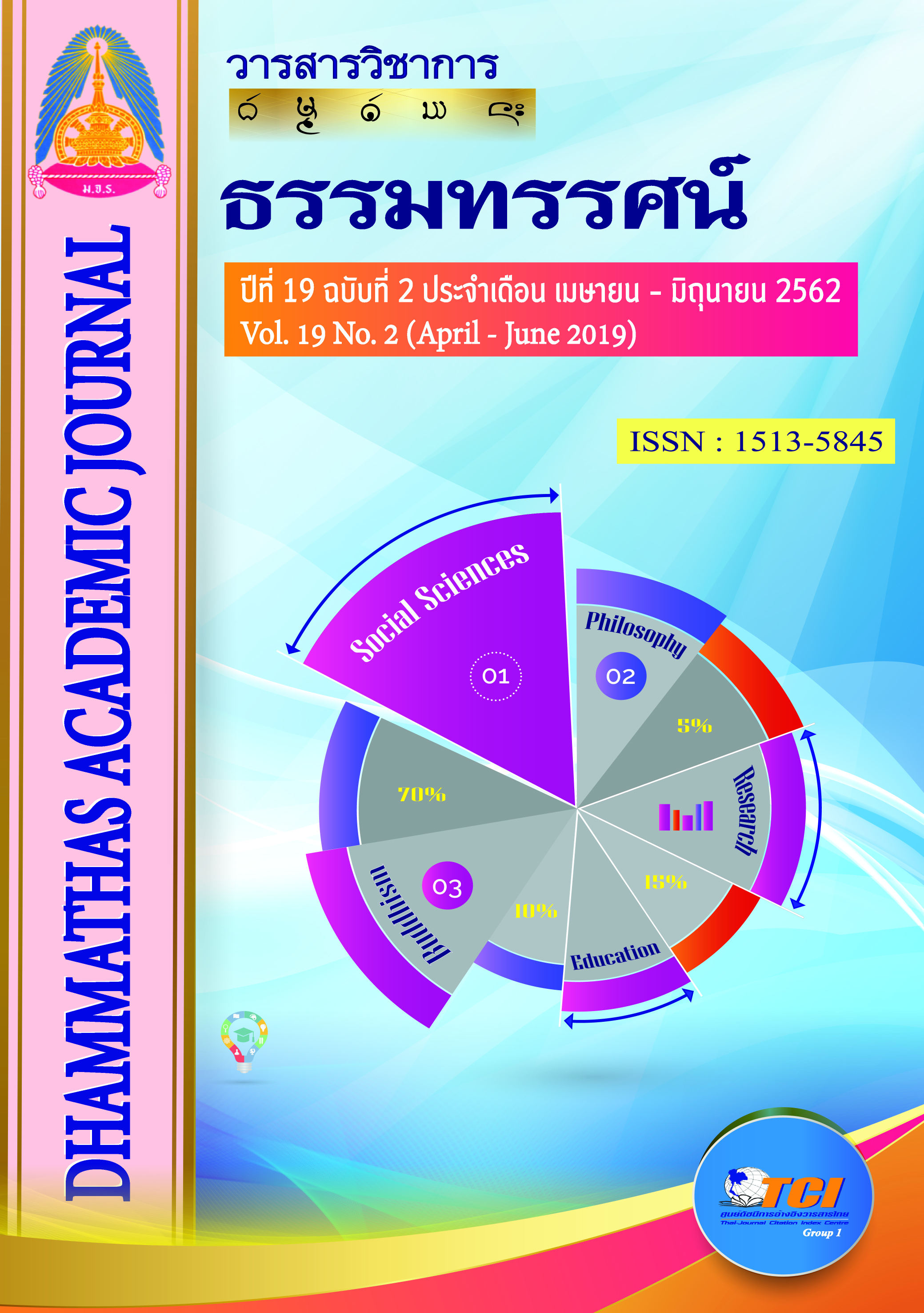The Model and Process of Caring for the End-of-Life Patients according to the Buddhist Principles of People in Phrae Province Model and Process of End-of-Life Care: Buddhism
Main Article Content
Abstract
The purposes of this research were to study the concept and methods for the End-of-Life care according to the modern medical principles and that of Buddhism, to develop the model and process of End-of-Life care according to the Buddhist principles of people in Phrae Province to analyze the results of the development of the model and the process for the end-of-life care according to the Buddhist principles of the people in Phrae Province. This is a qualitative research by means of researching documents and interviews. The population group includes monks in Phrae province, end-of life patients, relatives, doctors and nurses of Phrae hospital, a total of 18 persons .Combined with a focus group discussion together with action research is a model experiment with end-of life patients who have undergone 7 screening processes.
The findings are that:
1. Regarding the concepts and methods of caring for patients at the end of their life, the prominent principles of modern medical relates to the dignity of patients. The method used in care is to support the lives of patients to reach the end of a peaceful life called “good death or dying well”. Patients will be taken care of at the end of their lives with the aim to relieve the pain to the utmost and in accordance with the wishes of patients and their relatives, including the desire for social, psychological and philosophical critical thinking of patients as well. The concept and method of caring for patients at the end of life line according to Buddhism is the principle of caring for both the body and mind and helping to support the mind of the patient to be completely conscious to a deep mind in the last stage before death.
2. On the model and process of end-of-life care according to the Buddhist principles of people in Phrae province, that was developed from patterns and processes derived from concepts and methods of caring for end-of-life patients in accordance with Buddhist principles integrating modern medical principles of Phrae hospital known as the paliative care model. The model relates to the 4 dimensions of holistic care: on the physical dimension, the suitable things have to be taken according his/her hair, nails, teeth and skin, residential environments to match the patient’s symptoms and condition according to the current medical principles. On the mental dimension: it utilizes concentration, recalling the Triple Gem virtue, together with listening and touching the patient with love and compassion. On the social dimension; it is acted with listening, touching and promoting the good relationships with family members and those who take care of patients. On the spiritual dimension, the principles in compliance with the patient’s faith are obeyed such as, the offering of donations, praying for longer life according to Lanna ceremony, the moral blessing, tieing the wrist with thread, Dharma conversation, Dhamma talk, and the practicing insight meditation.
3. While analyzing the results of the development of the model and the process of the end-of-life care with the 7 patients who were willing to participate in the project, it was found that some symptoms of pain were relieved. The patients felt in a better mood, reduce symptoms of irritability, were reduced, and they felt calmer. During the research, unluckily it occurred that 1 patient had died of the symptoms albeit peacefully. The doctors, nurses and relatives of the patients were satisfied with the overall Model. The scale level was high (4.33).

